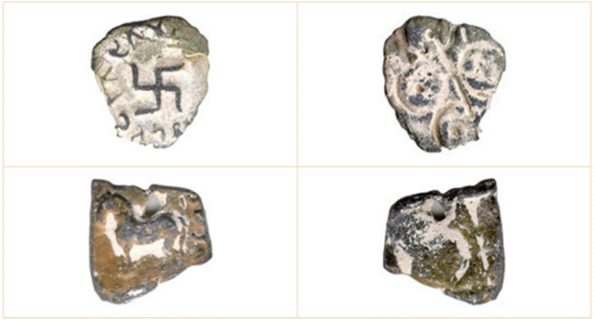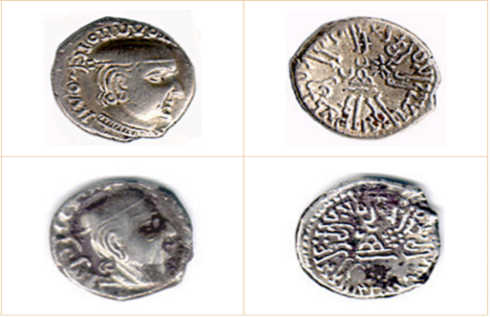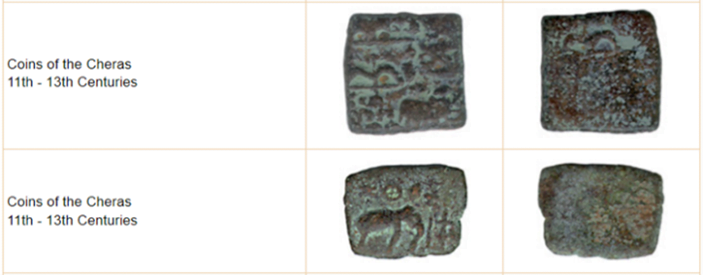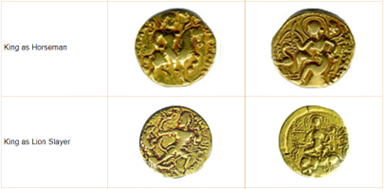History and Art and Culture
Context: Recently coinage with images of gods and goddesses dates back to the Kushans has been found.
About Kushana Empire:
- Origin: The Kushans were one of five branches of the Yuezhi confederation, an Indo-European nomadic people.
- Yuezhis are people that ruled over most of the northern Indian subcontinent, Afghanistan, and parts of Central Asia during the first three centuries.
- In India: The Yuezhi nomads later transformed themselves into a ruling elite in a large area from Afghanistan to the Indus Valley and North Indian Plain.
- Role of Kanishka: Kanishka is considered to be the greatest king of the Kushan dynasty that ruled over the northern part of the Indian subcontinent, Afghanistan, and possibly areas of Central Asia north of the Kashmir region.
- He is, however, chiefly remembered as a great patron of Buddhism.
- Great Eurasian power:
- It was during his reign, the kingdom was acknowledged as one of the four great Eurasian powers of its time (the others being China, Rome, and Parthia).
- Shaka Era:
- The year 78 marks the beginning of the Shaka era, a system of dating that Kanishka might have initiated.
- Satrapy system in India:
- Kushanas adapted the Persian satrapy administrative system into Indian kshatrapa administration.
- The Kushan regime gave much autonomy to local institutions such as castes, guilds, and Buddhist monasteries and meanwhile won support from those local communities.
- Trade with Rome:
- The Kushans became affluent through trade, particularly with Rome, as their large issues of gold coins show.
- The Kushan Empire benefited from the Silk Road trade economically and meanwhile received the knowledge of faraway countries and facilitated transferring the information to the visions of the Romans, Parthians, and Chinese.
- Buddhism and art schools in India:
- The Kushans were instrumental in spreading Buddhism in Central Asia and China and in developing Mahayana Buddhism and the Gandhara and Mathura schools of art.
- Legacy:
- Unfortunately, very little evidence of the Kushan rule survives today.
- In this, Kushan coins are perhaps the best evidence we may have of this illustrious dynasty.
About the Kushana Coins
Kadaphises:
- It was the Kushan emperor, Vima Kadaphises who introduced the first gold coins of India.
- The Double Dinar can be considered as the first gold coin of the Indian subcontinent.
- He introduced gold and copper coins, a large number of them have survived till today.
Kanishka:
- Kanishka minted coinage in two metals, gold and copper.
- Gold coins were minted in two denominations; Dinar (or stater) and quarter Dinars.
- Undoubtedly, Kushana coins were influenced by their predecessors Indo-Greeks, who were overthrown by Kushanas.
Images on the Kushana Coins:
Gods:
- The coins exhibit the figures of Greek, Roman, Iranian, Hindu, and Buddhist deities.
- According to historians, Kushanas were the first to use the image of Goddess Lakshmi on their coins, along with Ardochsho, the Iranic Goddess of wealth.
- They also depicted Oesho (Shiva), moon deity Miro and Buddha in their coinage.
Kings:
- Kushan coins tell a great deal about the images of the kings as they wished to be seen by their subjects.
- The portraits on Kushana gold/copper coins of Vima Kadphises are amazingly individualistic, often showing him full-bearded, big-nosed, fierce looking warrior chieftain, perhaps with deformed skull, wearing.
- high helmet, tunic, overcoat and felt boots.
About Coins in India:
The beginning: The Coinage of India began anywhere between early 1st millennium BCE to the 6th century BCE, and consisted mainly of copper and silver coins in its initial stage.
- The coins of this period were Karshapanas or Pana.
Satavahana:
- The dates of their coming into power are contentious and are variously put between 270 BC to 30 BC.
- Their coins were predominantly of copper and lead; however, silver issues are also known.
- These coins carried the motifs of fauna like elephants, lions, bulls, horses, etc. often juxtaposed against motifs from nature like hills, tree, etc.
- The silver coins of the Satavahanas carried portraits and bilingual legends, which were inspired by the Kshatrapa types.

Western Kshatrapa:
- The legends on the coins were generally in Greek and Brahmi, Kharoshti too was used.
- The Western Kshatrap coins are reckoned to be the earliest coins bearing dates.
- The common copper coins are the ‘bull and hill’ and the ‘elephant and hill’ types.

South Indian Coinage:
Cheras:

Cholas:

India has a long tradition of coinage with images of gods and goddesses
Dynasties with gods on their coins in India:
Gupta Coins:

- The Gupta Empire produced large numbers of gold coins depicting the Gupta kings performing various rituals.
- The splendid gold coinage of the Guptas, with its many types and infinite varieties and its inscriptions in Sanskrit, are the finest examples of the coinage that we possess.
Vijayanagara Kings:
- Vijayanagara kings used coinage with Hindu idols. Harihara –II (1377-1404) introduced coins that had Brahma-Saraswati, Vishnu-Lakshmi and Shiva-Parvati.
- The Vijayanagara coins continued in circulation even after the kingdom was snuffed out in 1565 and commanded a premium when French traveller Tavernier visited the region.
The British East India Co.:
- The British East India Co. at Madras Presidency minted coins labelled as the Three Swamy Pagoda, which depicts Lord Balaji flanked by Sridevi and Bhudevi on either side.
- Not all the coins were freshly minted. Some were repurposed. Some were issued to show continuity.
Other Coins:
- Ancient India had considerable trade links with the Middle East, Europe (Greece and Rome) as well as China. This trade was carried out over land partly along what came to be alluded to as the silk route and partly through maritime trade.
- In South India, which had a thriving maritime trade, Roman coins even circulated in their original form, albeit slashed at times as a gesture disclaiming intrusions of foreign sovereignty.
Source: The Hindu












